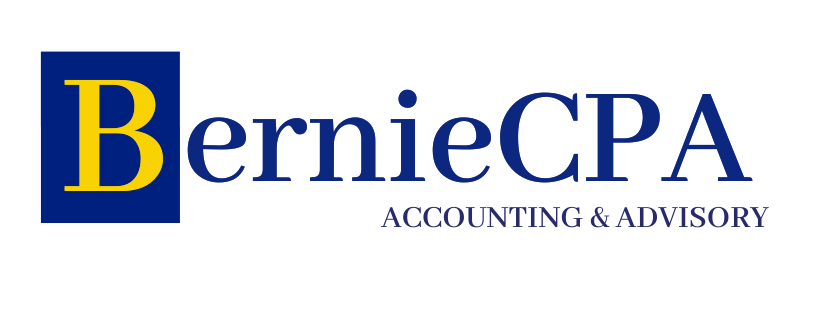Unlocking the Potential: Maximizing the Benefits of Beneficial Ownership Filing in 2024
Beneficial ownership filing refers to the process of disclosing the individuals or entities that ultimately own or control a company. This information is crucial for understanding the true ownership and control of a business, as it helps to prevent money laundering, tax evasion, and other illicit activities. Beneficial ownership filing typically includes details such as the names, addresses, and percentage of ownership of the beneficial owners. This information is then submitted to government agencies or regulatory bodies for review and verification.
In recent years, there has been a growing global push for greater transparency in beneficial ownership filing, as it is seen as a key tool in the fight against financial crime. Many countries have implemented laws and regulations requiring companies to disclose their beneficial owners, and international organizations such as the Financial Action Task Force (FATF) have also issued guidelines on beneficial ownership transparency. As a result, businesses around the world are now required to comply with these regulations and provide accurate and up-to-date information on their beneficial owners.
The Importance of Transparency in Beneficial Ownership
Transparency in beneficial ownership filing is essential for several reasons. First and foremost, it helps to prevent illicit activities such as money laundering, tax evasion, and corruption. By knowing who ultimately owns or controls a company, authorities can better track and investigate suspicious financial transactions. This not only helps to protect the integrity of the financial system but also ensures that businesses operate in a fair and ethical manner.
Furthermore, transparency in beneficial ownership filing promotes trust and confidence in the business environment. When stakeholders, including investors, customers, and business partners, have access to accurate information about a company’s ownership structure, they can make more informed decisions. This transparency also helps to level the playing field for businesses, as it reduces the risk of unfair competition and fraudulent practices. Overall, transparency in beneficial ownership filing is crucial for promoting a healthy and sustainable business environment.
Leveraging Technology for Efficient Filing
With the increasing focus on beneficial ownership transparency, many businesses are turning to technology to streamline the filing process. Digital platforms and software solutions are now available to help companies collect, verify, and submit beneficial ownership information more efficiently. These tools not only save time and resources but also improve the accuracy and reliability of the data being reported.
One of the key benefits of leveraging technology for beneficial ownership filing is the ability to automate data collection and verification. By using digital platforms, companies can easily gather information from their beneficial owners and ensure that it is complete and up-to-date. This reduces the risk of errors and omissions, which can lead to compliance issues down the line. Additionally, technology can help companies securely store and manage their beneficial ownership data, making it easier to access and share with relevant authorities when required.
Addressing Challenges and Obstacles in Beneficial Ownership Filing
Despite the benefits of beneficial ownership filing, there are several challenges and obstacles that businesses may face when trying to comply with these regulations. One of the main challenges is the complexity of identifying and verifying beneficial owners, especially in cases where there are multiple layers of ownership or complex corporate structures. This can make it difficult for companies to accurately report their beneficial ownership information, leading to potential compliance issues.
Another obstacle is the lack of standardization in beneficial ownership reporting requirements across different jurisdictions. This can create confusion for businesses operating in multiple countries, as they may have to navigate different rules and regulations for each location. Additionally, some countries may lack the necessary infrastructure or resources to effectively enforce beneficial ownership filing requirements, making it easier for businesses to evade compliance.
Ensuring Compliance and Accountability
To ensure compliance with beneficial ownership filing requirements, businesses must take proactive steps to verify and report their beneficial owners accurately. This includes conducting thorough due diligence on their beneficial owners to confirm their identities and percentage of ownership. Companies should also establish robust internal controls and processes to regularly review and update their beneficial ownership information as needed.
In addition to internal measures, governments and regulatory bodies play a crucial role in ensuring compliance with beneficial ownership filing requirements. They must provide clear guidance and support to businesses on how to comply with these regulations, as well as establish effective enforcement mechanisms to hold non-compliant companies accountable. This may include imposing penalties or sanctions on businesses that fail to meet their beneficial ownership reporting obligations.
Realizing the Economic and Social Impact of Beneficial Ownership Filing
The impact of beneficial ownership filing extends beyond just preventing financial crime; it also has significant economic and social implications. By promoting transparency and accountability in business ownership, beneficial ownership filing helps to create a more level playing field for businesses, which can lead to increased competition and innovation. This ultimately benefits consumers by providing them with more choices and better products and services.
Furthermore, beneficial ownership filing can contribute to greater trust and confidence in the business environment, which is essential for attracting investment and fostering economic growth. When stakeholders have access to accurate information about a company’s ownership structure, they are more likely to invest in or do business with that company. This can lead to job creation, economic development, and overall prosperity for communities.
Best Practices for Maximizing the Benefits of Beneficial Ownership Filing
To maximize the benefits of beneficial ownership filing, businesses should adopt best practices for collecting, verifying, and reporting their beneficial ownership information. This includes implementing robust due diligence processes to confirm the identities and percentage of ownership of their beneficial owners. Companies should also establish clear internal controls and procedures for regularly reviewing and updating their beneficial ownership data.
In addition to internal measures, businesses should also stay informed about the latest regulations and guidelines related to beneficial ownership filing in the jurisdictions where they operate. This may involve seeking legal counsel or consulting with compliance experts to ensure that they are meeting their reporting obligations. By staying proactive and informed, businesses can avoid potential compliance issues and contribute to a more transparent and ethical business environment.


